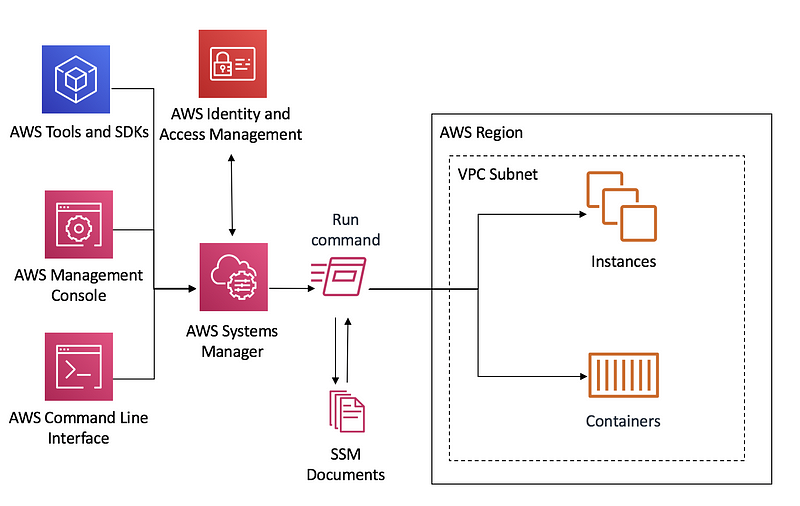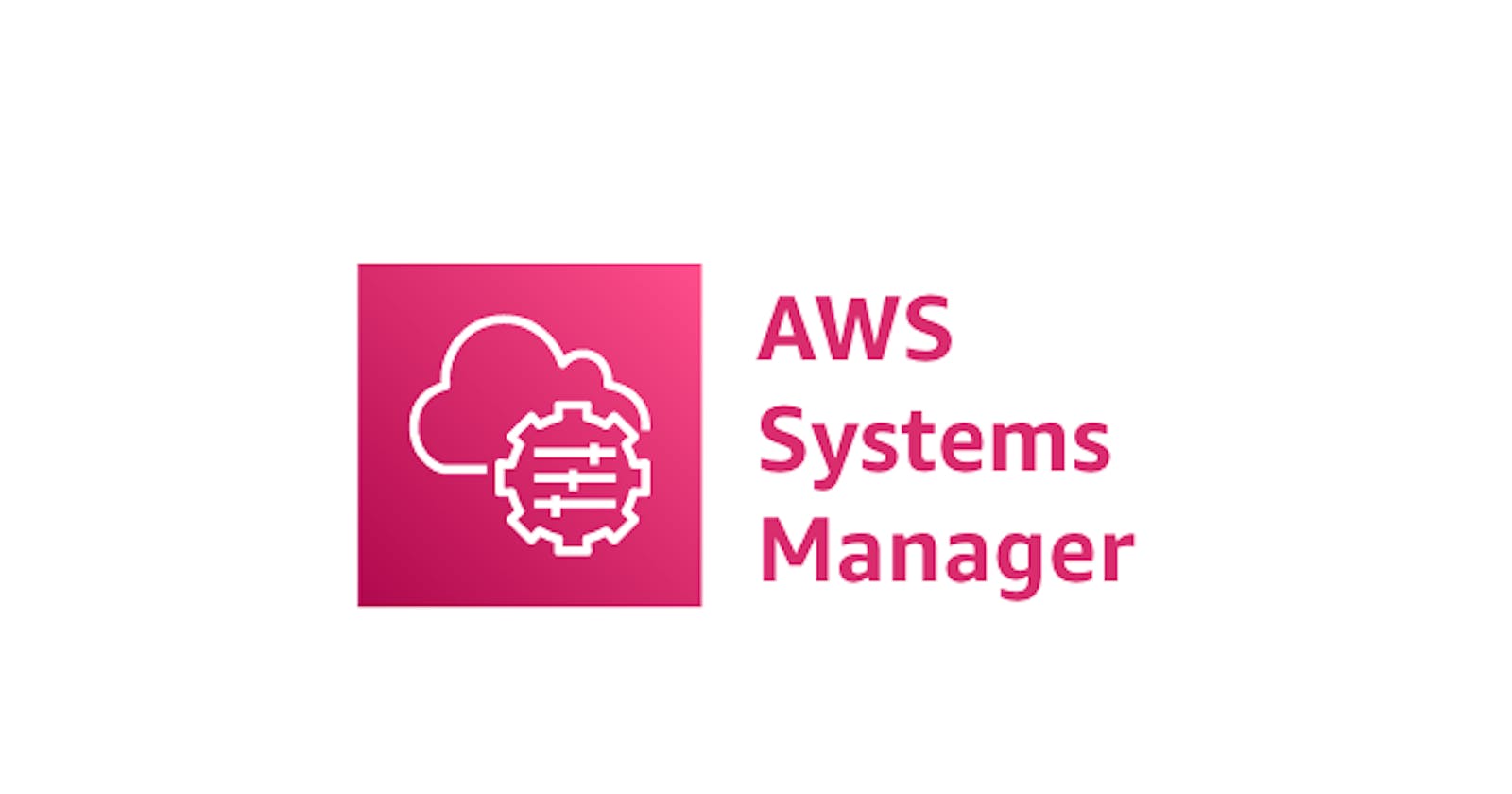Mastering AWS Systems Manager: A Comprehensive Guide to Streamlining Infrastructure Management
Unlocking the Power of Automation, Monitoring and Compliance with AWS Systems Manager.
Welcome to an in-depth exploration of AWS Systems Manager, your go-to solution for managing and automating tasks across your AWS infrastructure.
In this comprehensive guide, we'll delve into the core components, key features, practical use cases, and best practices of AWS Systems Manager. Whether you're an IT professional, a DevOps enthusiast, or a cloud beginner, get ready to simplify and streamline your infrastructure management tasks with Systems Manager.
Introduction to AWS Systems Manager
AWS Systems Manager acts as the central hub for managing and automating operational tasks across AWS and on-premises resources. It offers a suite of tools and features that empower DevOps professionals to automate tasks, maintain compliance, and reduce operational costs. Let's embark on this journey and uncover the capabilities that make AWS Systems Manager an indispensable part of your AWS toolkit.

Understanding AWS Systems Manager
Core Components Overview:
AWS Systems Manager comprises several core components that form the foundation of its capabilities:
State Manager: Manages the configuration of instances to ensure they are in the desired state.
Inventory: Provides a detailed inventory of your resources, aiding in resource tracking and management.
Automation: Enables the automation of manual, time-consuming tasks, enhancing operational efficiency.
Parameter Store: Securely stores and manages configuration data, including sensitive information such as passwords and API keys.
Patch Manager: Automates the process of patching instances, enhancing security and compliance.
Key Features and Capabilities:
Real-time Monitoring and Insights: Systems Manager offers real-time monitoring and insights into your infrastructure, facilitating proactive management.
Automation and Orchestration: Efficiently automate and orchestrate operational workflows, reducing manual intervention and improving efficiency.
Managing Instances at Scale: Systems Manager allows you to manage instances in fleets, simplifying operations across large environments.
Practical Use Cases and Demonstrations
Use Case 1: Configuration Management
Scenario: You have a fleet of EC2 instances powering your application, each requiring specific configurations for optimal performance.
Solution:

Fig 1. Configuration Management
- Define Configurations: Use Systems Manager to define configurations for your EC2 instances.
- Automation Document (
configurations-automation-document.json):
jsonCopy code
{
"schemaVersion": "2.2",
"description": "Configurations for EC2 Instances",
"mainSteps": [
{
"action": "aws:runShellScript",
"name": "configureInstances",
"inputs": {
"runCommand": ["sh", "configure_instances.sh"],
"workingDirectory": "/tmp"
}
}
]
}
- Shell Script (
configure_instances.sh):
bashCopy code
#!/bin/bash
# Example: Configure Nginx on EC2 instances
sudo yum update -y
sudo yum install -y nginx
# Add custom configurations
echo "server {
listen 80;
server_name example.com;
location / {
root /usr/share/nginx/html;
index index.html;
}
}" | sudo tee /etc/nginx/conf.d/sample_app.conf
# Restart Nginx
sudo service nginx restart
Apply Configurations at Scale: Apply these configurations to multiple instances simultaneously.
- Execute the automation workflow for all instances:
bashCopy code
aws ssm start-automation-execution --document-name "configurations-automation-document" --region us-east-1
Ensure Consistency: Systems Manager ensures each instance receives the correct configurations consistently.
Real-time Monitoring: Benefit from real-time monitoring within Systems Manager, ensuring configurations are maintained.
Use Case 2: Patch Management
Scenario: Ensuring all your EC2 instances are up-to-date with the latest security patches is crucial for security and compliance.
Solution:

Fig 2. Patch Management
- Automate Patching Processes: Use Systems Manager to automate patching for all your EC2 instances.
- Automation Document (
patching-automation-document.json):
jsonCopy code
{
"schemaVersion": "2.2",
"description": "Automated Patching for EC2 Instances",
"mainSteps": [
{
"action": "aws:runPatchBaseline",
"name": "applyPatches",
"inputs": {
"installOverrideList": ["*"],
"installOverride": "all",
"rebootOption": "rebootIfNeeded"
}
}
]
}
Generate Compliance Reports: Systems Manager generates compliance reports, showing the status of patching across instances.
- Run compliance checks:
bashCopy code
aws ssm list-compliance-items --resource-id "i-instanceID" --resource-type "ManagedInstance" --region us-east-1
Scheduled Patching: Set up scheduled patching windows to minimize disruption.
Real-time Monitoring: Benefit from real-time monitoring within Systems Manager, alerting you to any issues during the patching process.
Use Case 3: Real-time Monitoring and Alerts
Scenario: Ensuring real-time monitoring and receiving alerts for critical events in your EC2 instances is vital for proactive issue resolution.
Solution:

Fig 3. Real Time Monitoring and Alerts
- Set up Monitoring Automation:
- Automation Document (
monitoring-automation-document.json):
{
"schemaVersion": "2.2",
"description": "Real-time Monitoring and Alerts",
"mainSteps": [
{
"action": "aws:runShellScript",
"name": "monitorInstances",
"inputs": {
"runCommand": ["sh", "monitor_instances.sh"],
"workingDirectory": "/tmp"
}
}
]
}
- Shell Script (
monitor_instances.sh):
#!/bin/bash
# Example: Install and configure CloudWatch agent for real-time monitoring
wget <https://s3.amazonaws.com/amazoncloudwatch-agent/amazon_linux/amd64/latest/amazon-cloudwatch-agent.rpm>
sudo rpm -U ./amazon-cloudwatch-agent.rpm
# Configure CloudWatch agent
echo '{
"metrics": {
"append_dimensions": {
"AutoScalingGroupName": "${aws:AutoScalingGroupName}",
"ImageId": "${aws:ImageId}",
"InstanceId": "${aws:InstanceId}",
"InstanceType": "${aws:InstanceType}"
},
"metrics_collected": {
"mem": {
"measurement": [
"mem_used_percent"
]
},
"swap": {
"measurement": [
"swap_used_percent"
]
}
}
}
}' | sudo tee /opt/aws/amazon-cloudwatch-agent/etc/amazon-cloudwatch-agent.json
# Start CloudWatch agent
sudo /opt/aws/amazon-cloudwatch-agent/bin/amazon-cloudwatch-agent-ctl -a fetch-config -m ec2 -c file:/opt/aws/amazon-cloudwatch-agent/etc/amazon-cloudwatch-agent.json -s
- Configure CloudWatch Alarms:
- Use the AWS Management Console or AWS CLI to set up CloudWatch Alarms based on metrics collected.
aws cloudwatch put-metric-alarm --alarm-name "HighMemUsageAlarm" --metric-name "mem_used_percent" --namespace "CWAgent" --statistic "Average" --period 300 --threshold 80 --comparison-operator "GreaterThanThreshold" --dimensions "Name=InstanceId,Value=i-instanceID" --evaluation-periods 2 --alarm-actions "arn:aws:sns:us-east-1:123456789012:MySNSTopic"
- Real-time Monitoring:
- Monitor real-time metrics in the CloudWatch console or programmatically through APIs.
2. Alerting:
- Receive alerts via Amazon SNS when metrics breach the defined thresholds.
Best Practices and Tips
Secure Parameter Storage: Utilize Systems Manager Parameter Store for storing sensitive data securely.
Scheduled Maintenance Windows: Set up scheduled maintenance windows for updates to minimize disruption.
Automation Document Versioning: Version your automation documents to track changes effectively.
Conclusion
Mastering AWS Systems Manager empowers you to simplify and streamline your infrastructure management tasks. From real-time monitoring to automation and orchestration, Systems Manager provides a comprehensive set of tools to enhance operational efficiency, ensure compliance, and optimize costs. As you embark on your AWS journey, consider Systems Manager as a key ally in your toolkit. Start exploring Systems Manager today and unlock the full potential of your AWS infrastructure. Happy managing! 🚀🔧
